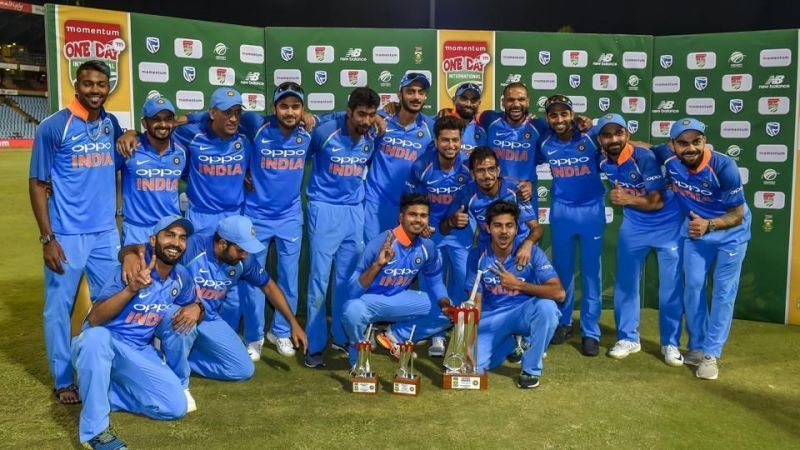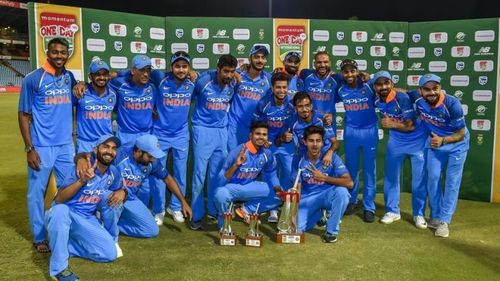
It's high time Indian Cricket starts producing more power hitters

Australia has Chris Lynn, Glenn Maxwell, Aaron Finch and David Warner (well, not for the next 12 months), New Zealand has Anderson, Guptill and Munro, South Africa has AB de Villiers, David Miller and Chris Morris, England has Alex Hales, Jason Roy, Eoin Morgan and Jos Buttler and West Indies has Chris Gayle, Evin Lewis, Johnson Charles, Carlos Brathwaite and Darren Sammy. Even Sri Lanka now has good power hitters in Kusal Perera and Kusal Mendis who are capable of taking the attack to the bowlers.
All of these players are known for their prolific limited overs striking and can hit from ball one, demolishing any bowling attack in the world on their day. However, when we look at the ranks of the Indian Cricket Team, there is not a single player who can show that kind of intent.
Having a well-established domestic T20 league, such as the IPL, and the investment that has been made in it, would make anyone believe that there would at least be a few players who would have mastered the skills of power hitting. However, that has not happened.
As the game of cricket transforms even further, becoming more a spectacle than a test of abilities, more and more teams will be judged by their abilities to do well in T20s. With the modern-day game becoming highly batsman-friendly, it is imperative that Indian players develop the ability to outhit their competitors from other countries.
It is a big surprise that the last group of big hitters for the Indian side had all come up in the last decade: stars like Yusuf Pathan, Yuvraj Singh, Suresh Raina, MS Dhoni, and Virender Sehwag among others. Even these players, with the exception of Sehwag, were not really as naturally aggressive as some of the modern-day T20 specialists or even power hitters of their times, such as Sanath Jayasuriya, Adam Gilchrist or Brendon McCullum who really went after the bowling irrespective of the match situation.
That does not mean that India does not have players capable of using the long handle as the likes of Virat Kohli, Rohit Sharma and Shikhar Dhawan do it successfully from time to time. However, all of them have a pattern where they love to take their time and get settled before going after the bowling. Most of them also like to play proper cricketing shots and wait for the bad balls instead of just going after everything.
What is interesting however is that the results of the Indian T20 side do not reflect how poor the power hitting abilities of the new generation is. Most of the success has come as a result of playing on some really slow pitches which have brought the bowlers, especially the spinners, into the game. This is also one of the main reasons why India have, more often than not, in recent memory (after the 2013 series vs Australia), failed to convert good starts into big totals.
The only match India lost in the last ODI series in South Africa was on a pitch that is renowned to be one of the flattest in the world. They also lost a T20 game on a placid Centurion track, both matches being high scoring with pitches not providing any assistance for the two wrist spinners.
Even the last time the team chased a 300 plus score against England, they were 63 for 4 before Kohli and Kedar Jadhav took things into their own hands. The 5-match ODI series in Australia saw India getting close on 4 occasions, before giving up as the middle and lower orders could not accelerate after good starts from Dhawan, Rohit and Kohli. The only win in that series came when India crossed the line on the back of a solid knock from Manish Pandey.
The team has really big expectations from Hardik Pandya but he has flattered to deceive. While he does have the ability to go big against spinners, he has not looked comfortable batting against the faster bowlers. The teenage sensation Rishabh Pant has, in the limited opportunities he has received so far, looked like a fish out of water when trying to play his strokes.
All these incidents are clearly an indication of the changing culture in Indian domestic cricket. The most successful power hitters for India have been the ones who have retained their natural flair. Pathan, Sehwag, Yuvraj, Raina and Dhoni did not have a textbook technique, yet had the hand-eye coordination necessary to go big.
It is really disappointing to see young talents like Sanju Samson, Unmukt Chand, Robin Uthappa, Manish Pandey, Hanuma Vihari, Sarfraz Khan and Rishabh Pant unable to grow their game and make any sort of major impact even after getting regular opportunities either at the A level or the senior level. Whether it is a problem with the coaching system or not, it is high time that the BCCI realizes the need to have T20 specialists. It is necessary for the selectors to look at separating the core of all three Indian teams as this will let batsmen decide which format they want to better focus on rather than pushing all the talent in the country towards becoming all-format cricketers.
It is great for India to have a leader like Virat who excels in all three formats of the game, but to expect the same from everyone is far from ideal. The selectors should definitely look at identifying specific batsmen for specific formats and asking them to focus on those formats.
Moreover, it is necessary for T20 pitches in the country to become similar to those across the world. Time and again we have seen Indian teams relying on low and slow pitches to win limited over games against overseas teams who do not play slow bowling as well. However, with changing times, we need to realize that audiences want fast pitches, with more sixes, as they bring in more entertainment.
It is also imperative for domestic pitches for the Syed Mushtaq Ali Trophy to become consistent across the country which would enable players to show their skills and abilities rather than having to worry about misbehaving pitches. This will not only help domestic players in developing their stroke-making abilities, but also force bowlers to learn new skills in order to restrict run scoring.
This is especially important considering what we have seen in the Nidahas Trophy where India's reserve bowlers were carted all around the ground by Bangladeshi and Sri Lankan batsmen. Hopefully, the IPL will throw up some exciting new domestic talents who can further enhance the standards of T20 cricket in India.